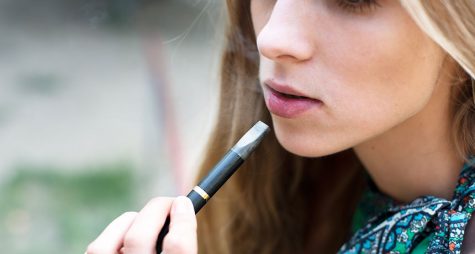The Price of Popularity
October 21, 2019

From the first puff of a cigarette or Juul, the swell of nicotine in the lungs becomes a feeling of exhilaration that many battle to release to gain back the control it’s won over them. The staggering effects of vaping have placed Juul at the “epicenter of a national debate,” claims Joshua Bright, journalist for the New York Times. “On one side stands longtime adult smokers who celebrate the device as the aid that finally helped them quit smoking. On the other side are teenagers who have never smoked a cigarette but who have swiftly become addicted to Juul’s intense nicotine hits.”
This week, the Food and Drug Administration tried to find a balance between the two, issuing restrictions that only allow stores to sell a few of the flavored e-cigarettes from locations that are inaccessible to buyers under the age of 18; however, it stopped short of previous threats to ban stores from selling flavors altogether. The corporation was drawn aback by the extremities of teenage vaping. According to the 2018 National Youth Tobacco Survey, released this past week, the current amount of middle and high school students who currently vape has grown to about 3.6 million.
The F.D.A. is evaluating whether Juul Labs intentionally marketed its devices towards youth. This past Tuesday, Juul Labs broadcasted that it would stop its social media promotions and suspend store sales of many of its flavors with the exception of tobacco, menthol and mint.
One pod of Juul’s flavored liquids contains an amount of nicotine roughly equivalent to one pack of cigarettes. This can be a benefit to addicts who get the nicotine fix they so seek without the carcinogenic smoke from cigarettes. But the impact on teenagers, whose brains are still developing, is troubling.
“Nicotine may disrupt the formation of circuits in the brain that control attention and learning,” claims Dr. Rachel Boykan, an executive member of the American Academy of Pediatrics’ section on tobacco control. “And there is a higher risk of them subsequently becoming tobacco smokers.”
While the research has not been thoroughly examined due to the products newer to the assembly line, some research suggests disturbing risks. A combined project between Duke and Yale’s Tobacco Center of Regulatory Science, found that when “popular flavors are added to a common solvent in the vaping liquids, they produce chemicals that irritate airways and lungs.” A 2016 study in the journal Chest said that “smoking e-cigarettes has an effect on the heart and arteries which, while was not as pronounced as that of combustible cigarettes, was still distinctive.”
However staggering the medical costs may be, many teenagers still see it as a risk they are willing to take to fill a certain role to which they can tie their identity to. In doing so, it costs them much more than money, but teachers and parents can often be clueless to their student’s or child’s usage as its odor-free nature can be virtually undetectable even if one were to walk into the room the second after they exhaled.
Essentially, smoking, at any level, age or type can only lead to health complications, addictions and an extreme waste of money better spent on improving one’s future; however, the choice will forever remain up to the individual. No amount of research or law restriction can limit the overall choice of the user, but the awareness of the effects, costs and concerns of such products can certainly change minds, hearts and lives for the better. With this in mind, I implore you: would you rather be the most popular kid in school who because of their choice to use such products will die young and most likely wheeze until their final breath, or the valedictorian who focuses their time, attention and energy to their future to seal their successful place in the rapidly changing world?